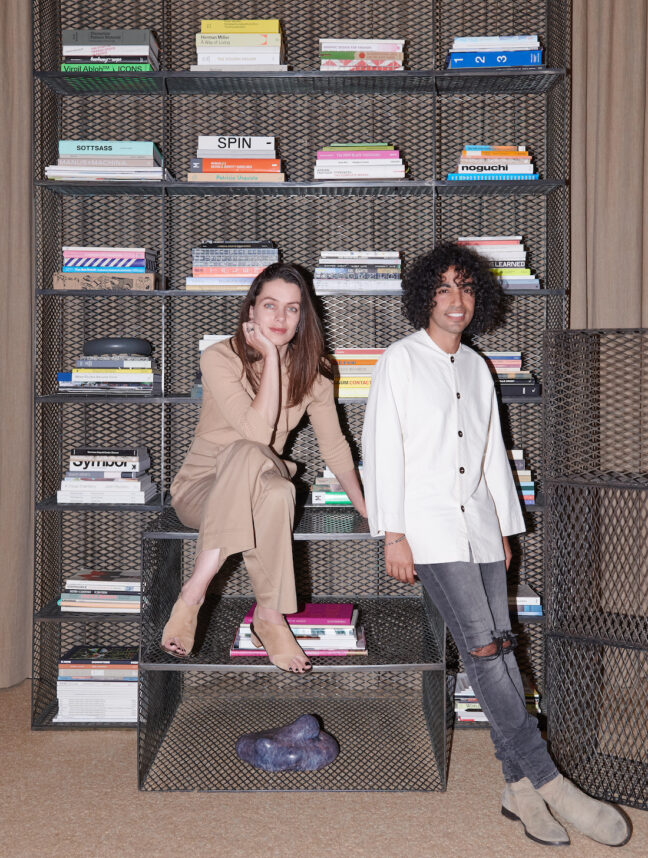‘People oftentimes want to just fill their homes with stuff. We are not those designers,’ says San Francisco’s Studio AHEAD
It’s immediately evident that San Francisco-based design practice Studio AHEAD are non-traditional in how they see the art of space-making. Firstly, there’s the complete lack of homogeneity across each of their projects. Then there’s the backgrounds of founders Homan Rajai and Elena Dendiberia, who spent years immersed in antiques before starting their studio.
In that time, the pair were exposed to the intricacies inherent in antique design – its rational quality, the inlay work, the beautiful stonework – and it gave them a deep respect for craftsmanship. When they left that world – “to seek other aesthetics that resonated more with us” – they didn’t leave the learnings behind. “We feel that these thought processes, and that care and attention to detail, can as easily be applied to the work we do now,” says Rajai, adding: “There’s this assumption that ethnic or vintage goods exist only in the past. We want to show our clients the broad spectrum of talented artisans, designers and craftspeople – who are incredibly talented and who can make contemporary and traditional pieces in a modern context.”


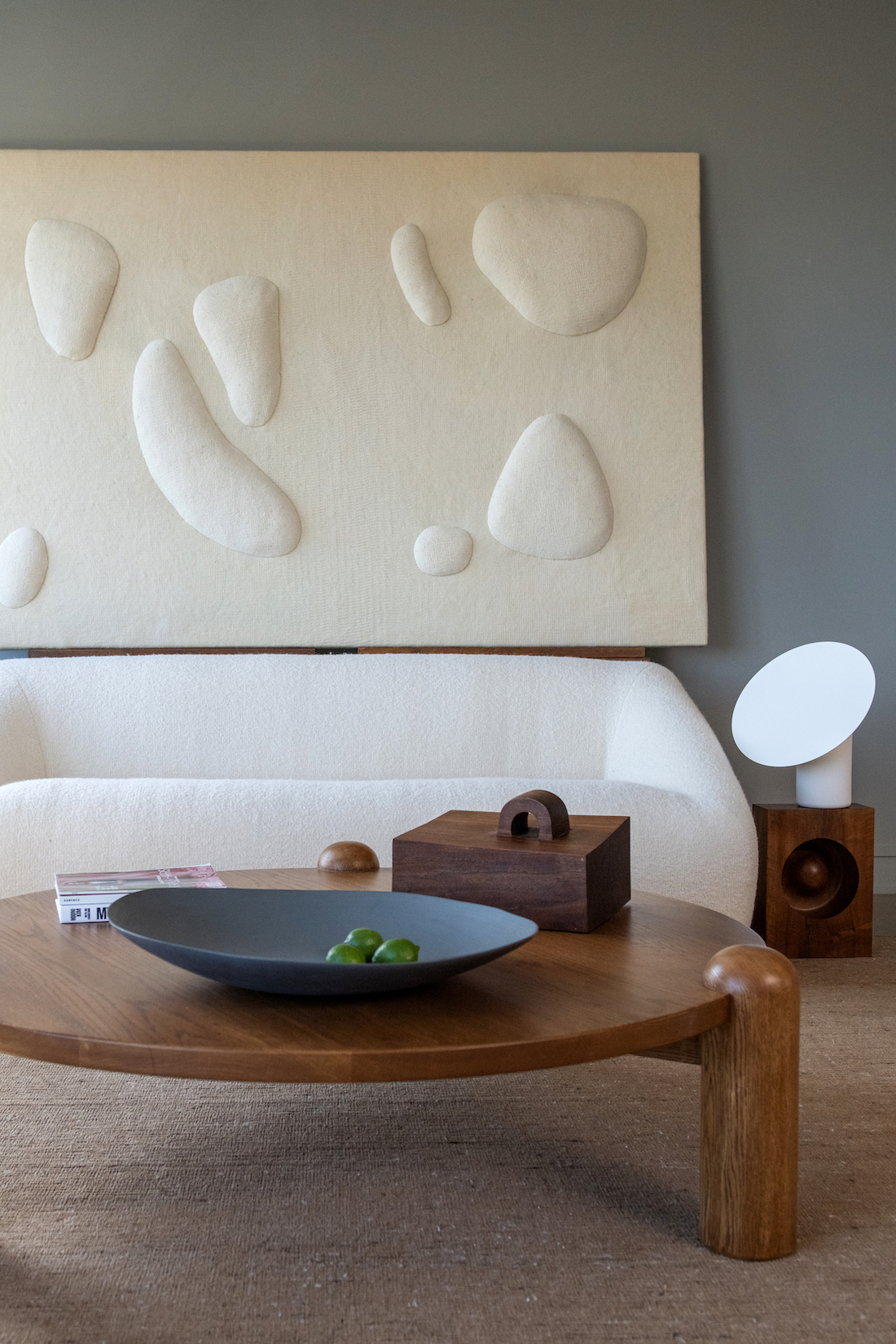
Effect sat down with Rajai and Dendiberia to find out more about their inquiry-led style of working and the evocative spaces that emerge as a result.
Why does Studio AHEAD calls itself an ‘art and design collective’ rather than the more traditional ‘interior design studio’?
We don’t like the pure term “interior design” – it doesn’t really define how we work. We have a borderless approach where our diverse ethnic backgrounds have been fused to bring a wholly unique perspective on what we do. Then we work collectively and collaboratively with many designers, creating more of a collective approach to design than a singular one.
Your process of working with clients is also rather different. Could you describe it?
At the beginning of each project, we embark on an intensive process of getting to know our clients. We want to really get to know them. We present them with a questionnaire of around 60–80 questions, with the first part focusing on logistics – the functional requirements of their day-to-day lives. For example, how do you sit? Upright? Loungey? Cross-legged? These kinds of questions inform us on how our clients like to live and therefore what pieces would be most suited their lifestyle.
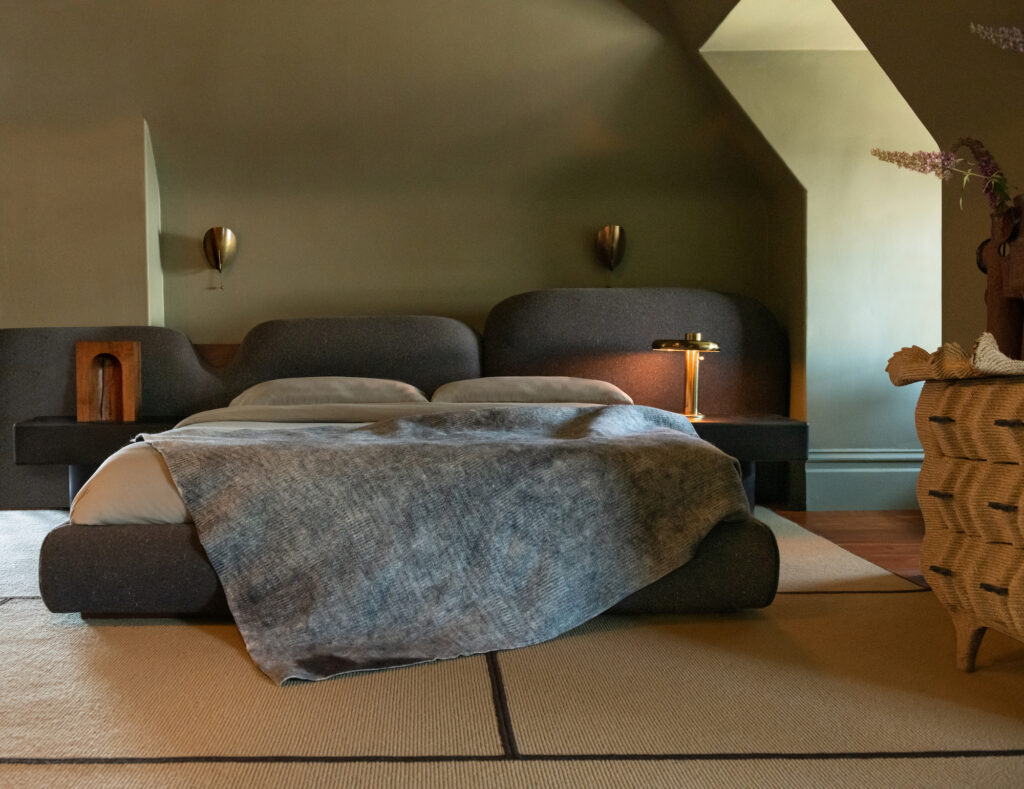
The second part focuses on their interests and desires. What movie directors do they like? What movements in history inspire them? Which artists – local or international – do they enjoy and follow? What is their ethnic background and how does it inform how they live? Then we present around 200–300 inspiration images and file the clients’ responses in a love, like or veto pile. We always look to see what clients dislike as much as what illicit strong feelings in them. This determines how we proceed with our design. We look to the artists and makers we work with and come up with creative solutions.
We are currently living in a culture of excess and multitasking, and our projects attempt to pare it all down.
Studio AHEAD
Your Noe Valley project is a prime example of how all your projects feel distinctive. What is the narrative behind it?
That project was all about contrast. The house, split over three levels, had varying aesthetics on each level. A pistachio green office is contrasted with dark moody spaces on the other levels. The client responded in her questionnaire that she wanted to create a mood in her home of “before and after the rain.” It’s such an evocative mood and visual and it defined our palette.
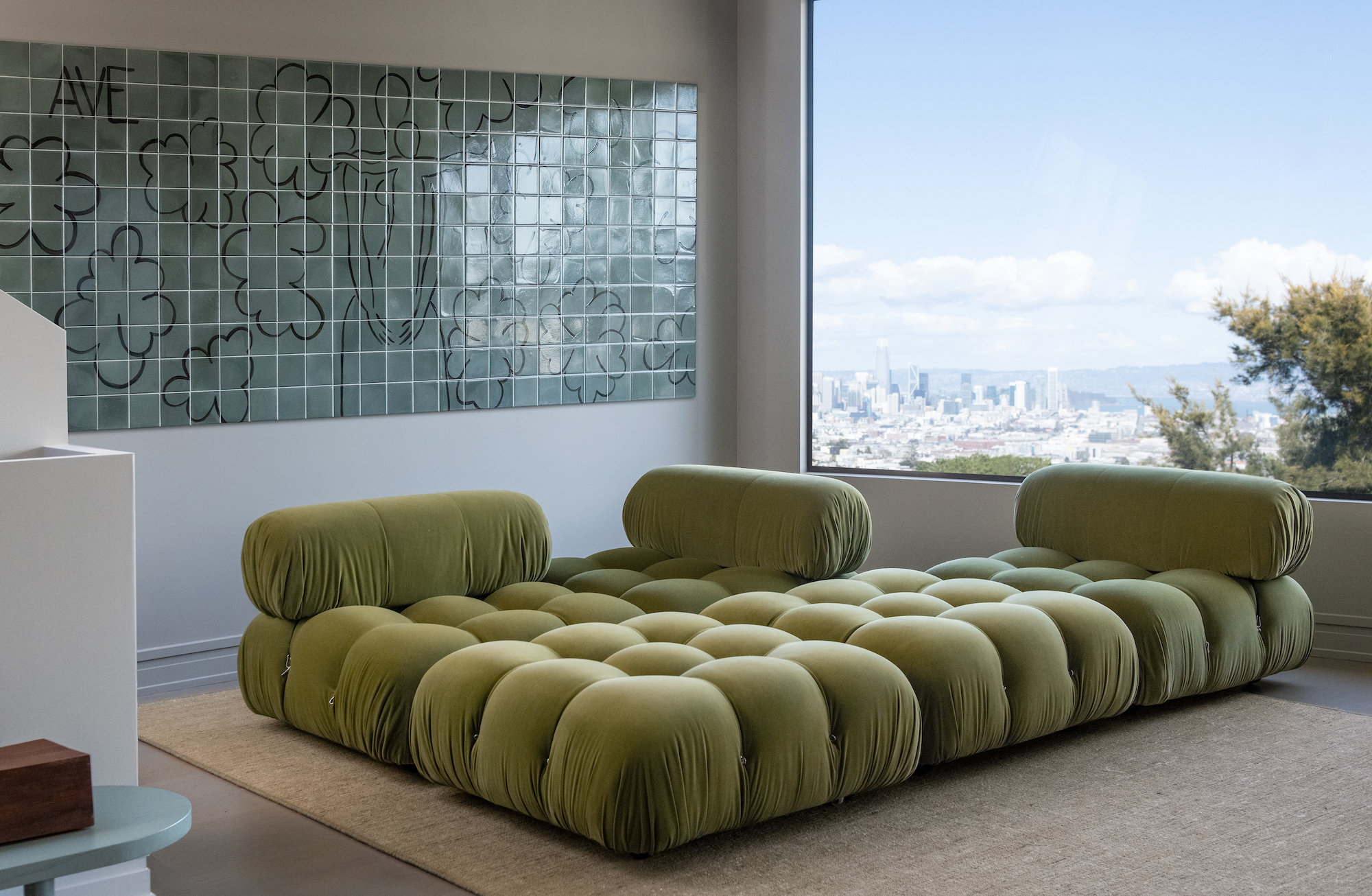

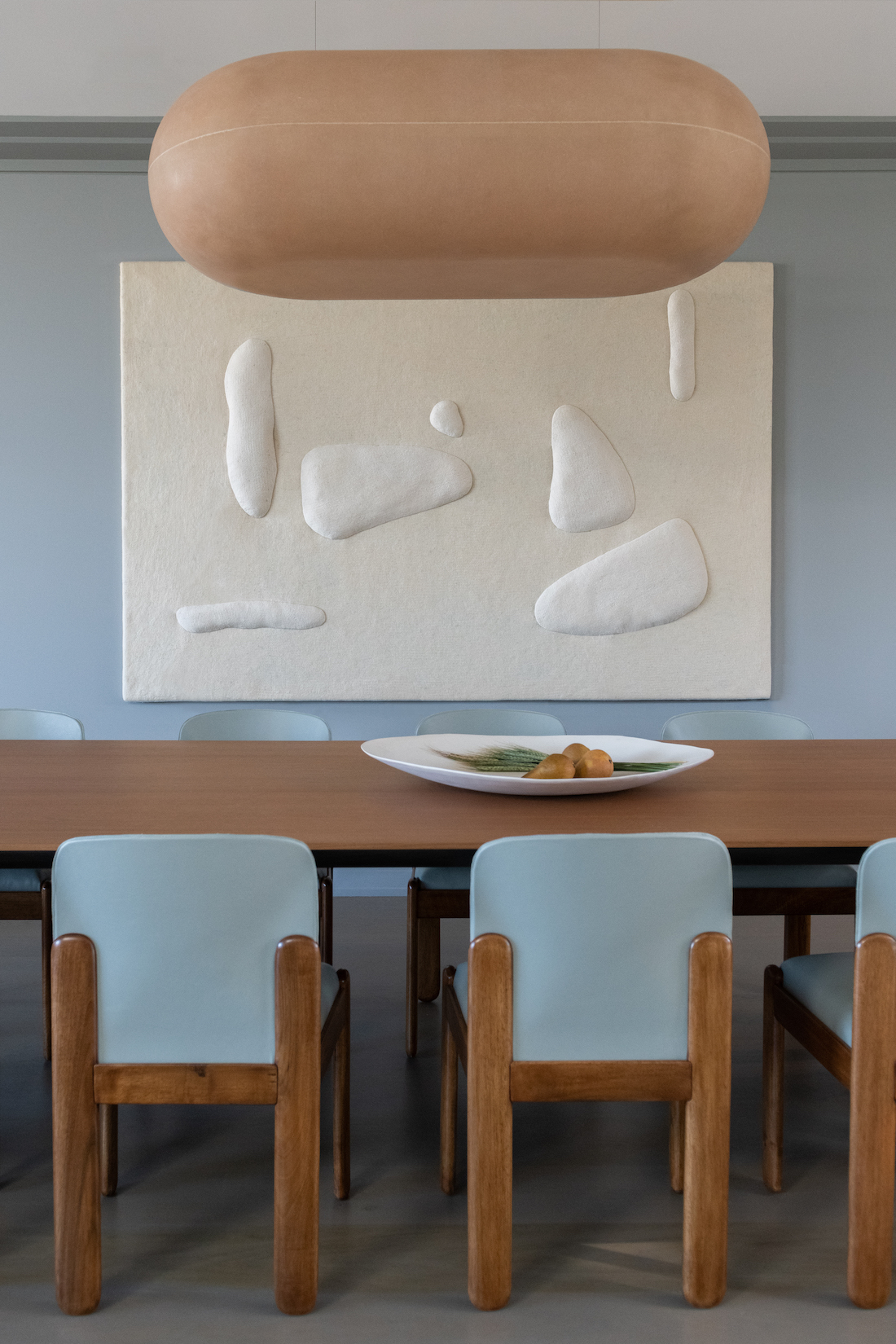
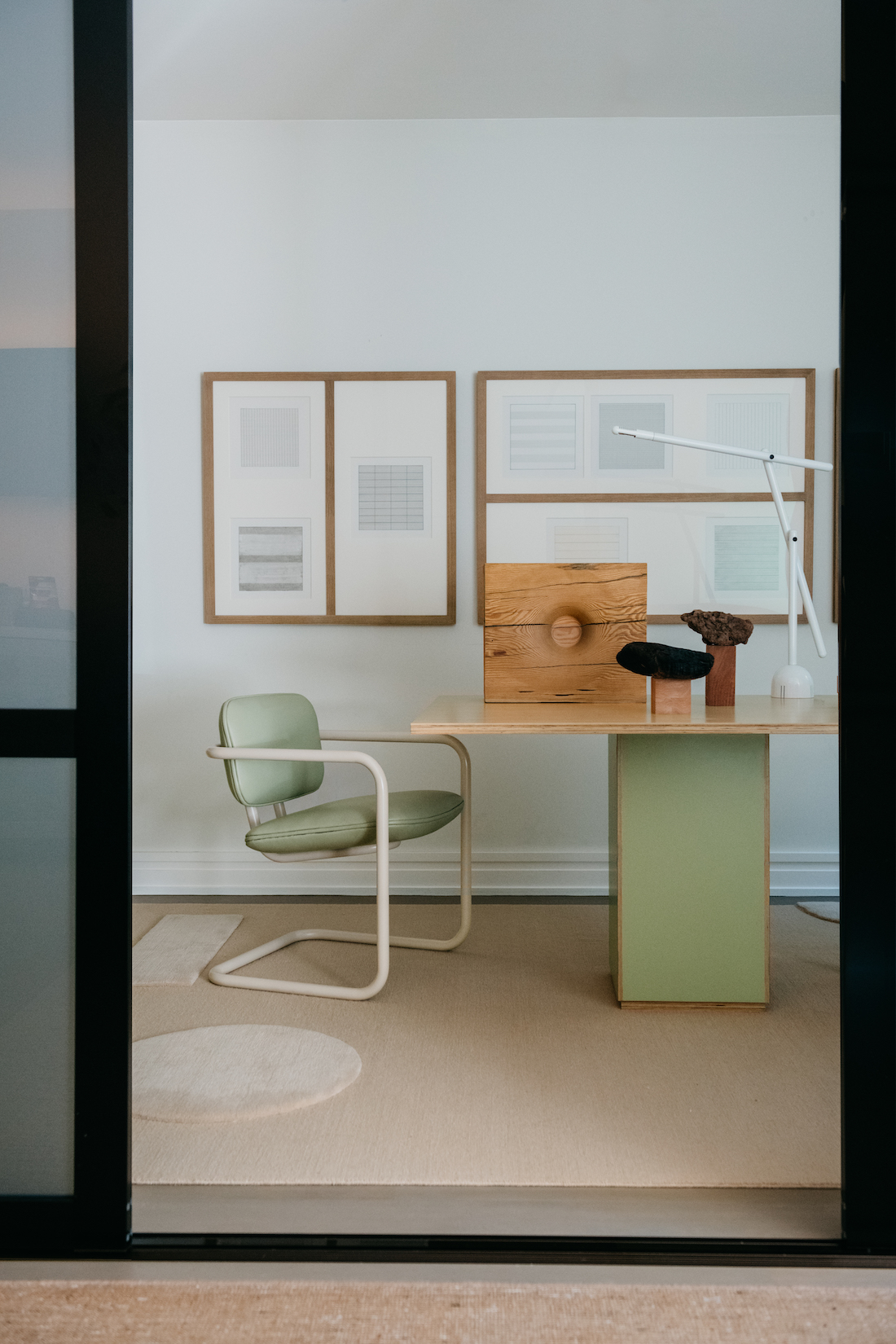
How do you go from an overarching concept like the rain to making specific design decisions?
This project truly came out of that intense interrogation of our clients which ultimately just makes their lives so much deeper and more enjoyable. We all just want to enjoy life, to create meaning for ourselves – and the storytelling of spaces helps us do that. If a client says they like blue, I ask further: Why do you like blue? How does it make you feel? Those kinds of questions. It’s a line of inquiry.
We all just want to enjoy life, to create meaning for ourselves – and the storytelling of spaces helps us do that.
Studio AHEAD founders Homan Rajai and Elena Dendiberia
So, the rain idea led to the palette and finishes which included evoking the wet feel of rain with glossy finishes. It brought in beautiful blues and greens, and we sought to create the feeling of a gathering storm. Our client also told us that she liked to sit on the floor – hence the low-slung furniture. And the rather unusual layout in the living room – a huge, low sofa dominating almost all the space – refers to the fact that she enjoys slumber parties and lounging around with friends in intimate settings where everyone is grouped together and the feeling is so much more intimate.
There is also an element of calmness in all your interiors.
We are currently living in a culture of excess and multitasking, and our projects attempt to pare it all down. These kinds of interiors encourage conversations to arise. People tend to stay longer, and linger and focus on what’s important.

Your Landscape Office project incorporates both hard-edged industrial elements, yet feels remarkably welcoming. Tell us how you achieved this look.
During the pandemic, we met a client who had an old-school marketing office. We just started chatting over zoom about him wanting the studio to exist in a new way – as more of a multi-disciplinary creative nexus. The idea of an office that was as an exhibition space emerged and a place where they could build community, host talks, gather etc. So, we used a mixture of elements like rugs which feel domestic and thick drapery to create a cocoon like atmosphere but then within we designed metal mesh furniture (fabricated by Oldani Art Studio) as well as ceramic sculptures (on the tables) by Nathan Lynch and a wall-hung artwork by Amy Feldman within a monochromatic palette.
How do you create a similar effect with clients who may have a restricted or limited budget?
When starting out on any project, we ask which parts of the project our client wants to zoom in and out on. People oftentimes want to just fill their homes with stuff. We are not those designers. We’d rather selectively choose what is the best option and phase in the rest as budget becomes available. We don’t rush anything – including accessories which are actually objects that you live with. Our philosophy is exploratory and intentionally changes the pace of expectations.
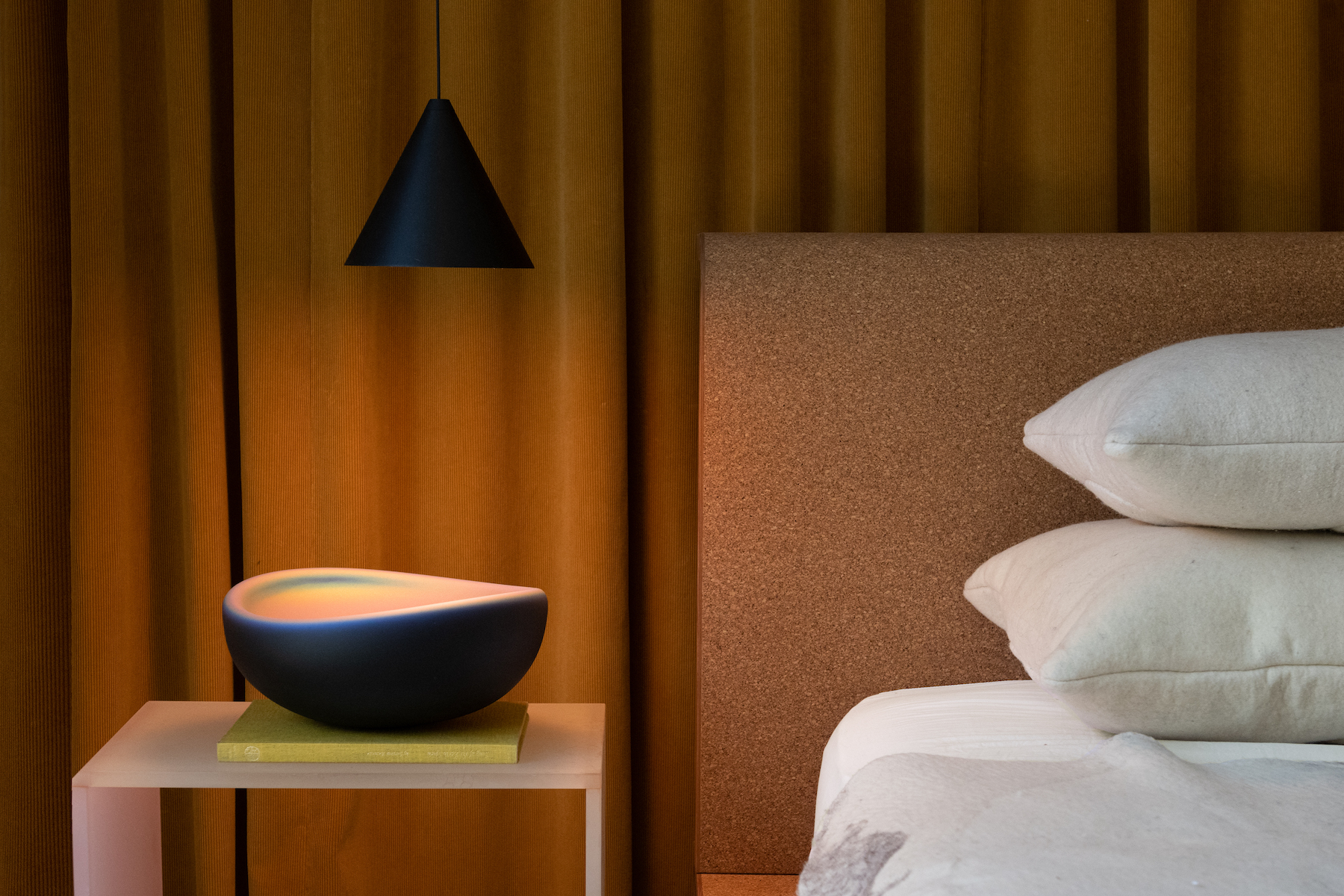
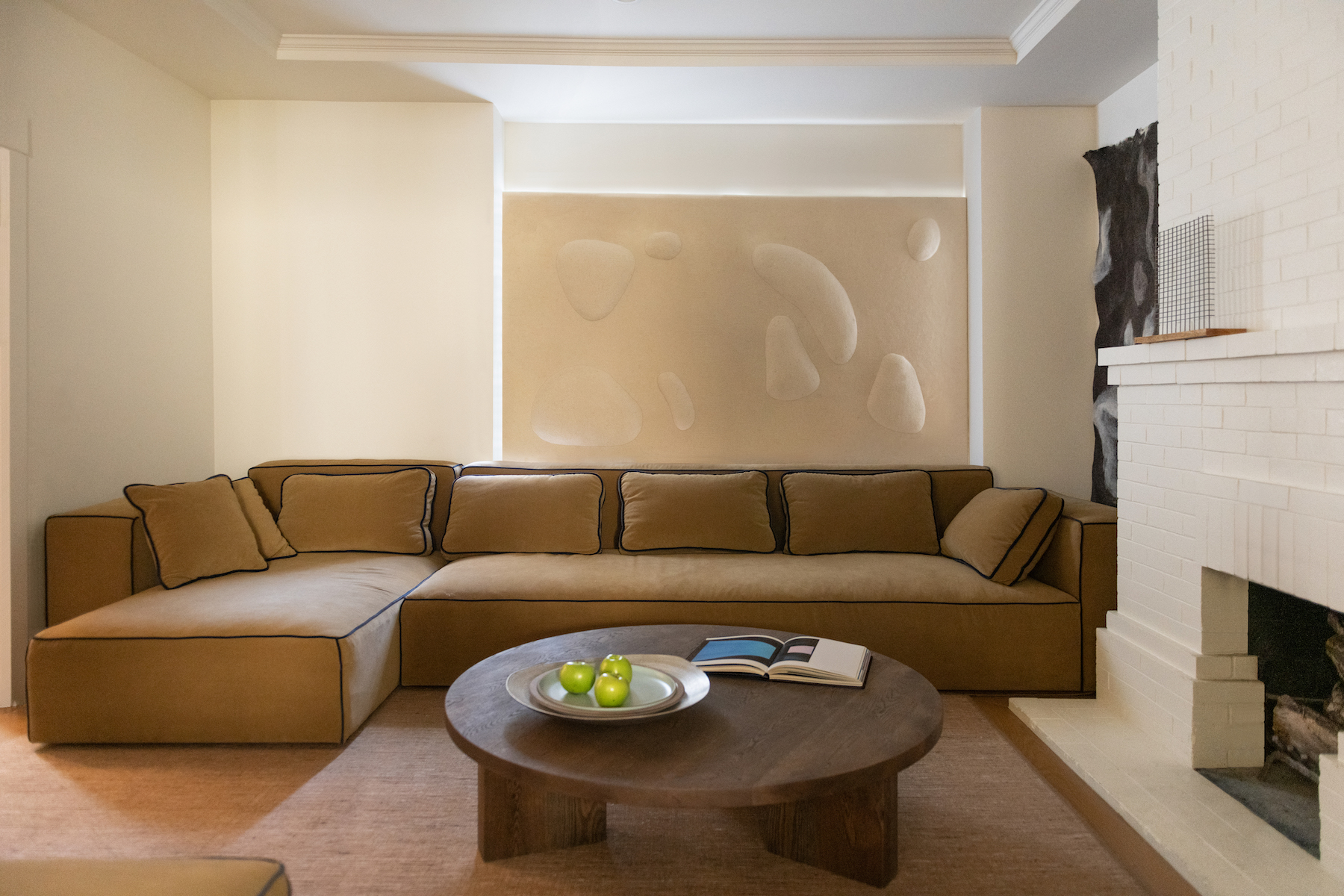
You champion local vendors and artisans working in traditional crafts. Which particular artists and interior designers resonate with you at present?
We look less at what interior designers are doing than how artists live. We love looking at spaces like Ido Yoshimoto’s off-the-grid cabin in Inverness and Jesse Schlesinger’s studio in Sausalito. We look at how they live and what they live amongst. We want to celebrate the artists we work with and the artful ways of living. They always break the rules and create their own realities. Studio AHEAD
Read more: Interior Designers I Interiors | Vintage | Antiques I Design | San Francisco | USA | Mid-Century



